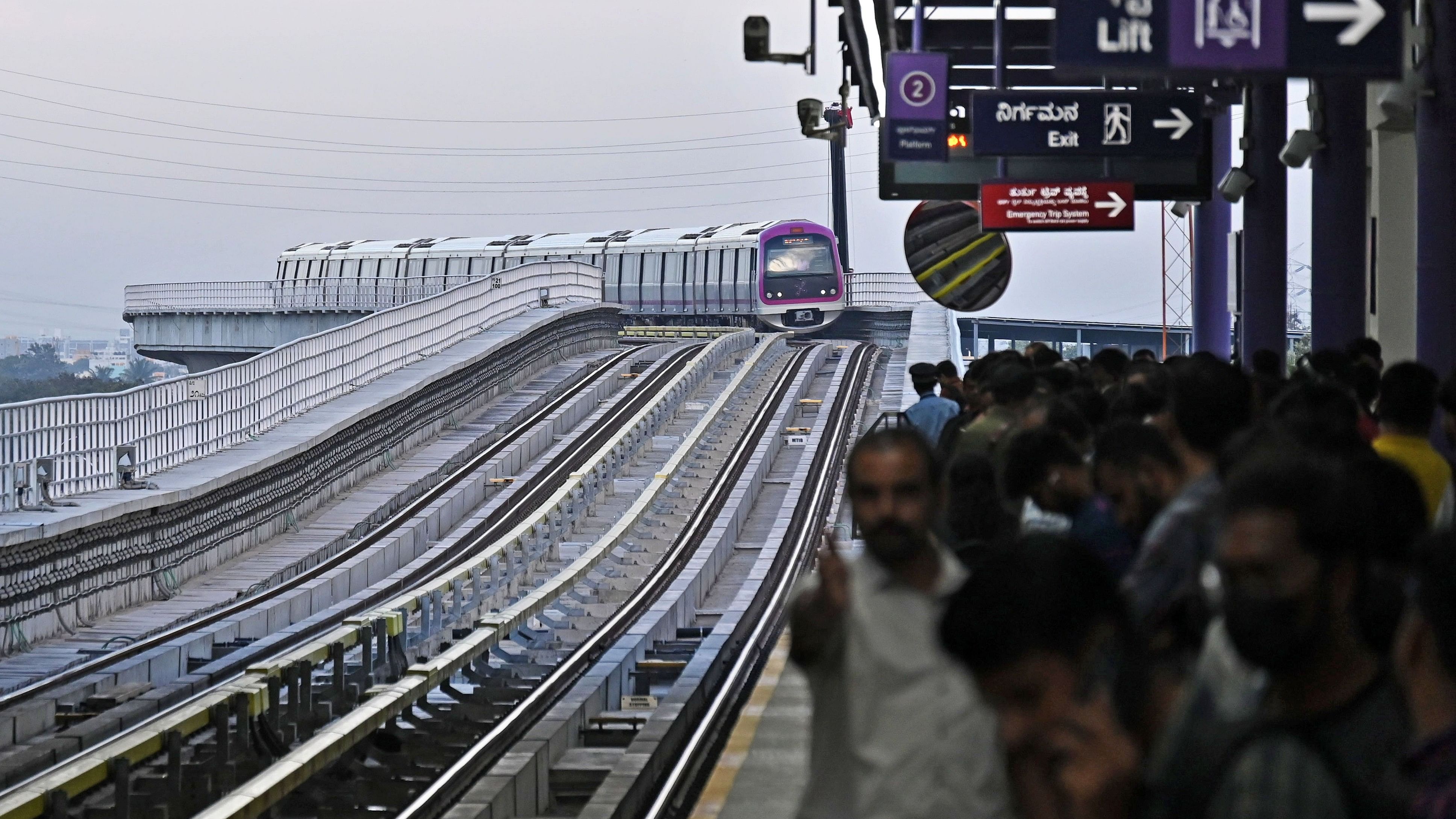
In an aspiring global city like Bengaluru, nearly 60 per cent of the jobs should have a metro station within 500 metres.
Credit: DH Photo/Pushkar V
Bengaluru: Even after the completion of Namma Metro's Phases 2, 2A and 2B, only 28 per cent of the formal-sector jobs in Bengaluru will be located within 500 metres of the nearest metro station — the benchmark distance for comfortable walking — according to a working paper released by the nonprofit WRI India.
Fifty-nine per cent of the jobs will be within a kilometre and 85 per cent within 2 km, the paper notes.
Phases 2, 2A and 2B, which will expand the Namma Metro network to 175.55 km, are slated for completion by June 2026.
An aspiring global city like Bengaluru, the paper argues, should aim to match global benchmarks. Hong Kong, for example, has 57 per cent of its formal jobs within 500 metres of a transit station, according to the report.
Titled 'Jobs near metro rail transit in Bengaluru: Enabling an accessible and productive city', the paper specifies how the city can use a Transit-Oriented Development (TOD) strategy to address the disconnect between public transport, growing employment opportunities and urban expansion.
Authored by Radha Chanchani, Amartya Deb, Jaya Dhindaw, Jyoti and Madhav Pai, the report was released on September 11.
In 2022, Karnataka approved the TOD policy (TODP) to promote compact, high-density development around transit stations, and encourage walking, cycling and public transport. The TODP is aligned with Bengaluru’s Comprehensive Mobility Plan, which seeks to increase the share of motorised public transport from 48 per cent in 2015 to 70 per cent by 2031.
The WRI study, using January 2023 data from the Labour Department on registered factories, shops and commercial establishments, assessed the proximity and density of jobs along both operational and under-construction metro stations.
It found that Bengaluru Urban has about two lakh registered enterprises (factories, shops, and commercial establishments) employing 4.8 million workers, 95 per cent of them within the Bengaluru Metropolitan Area.
The paper argues that government policies and land-market conditions have led to the development of large economic and employment subcentres on the city’s outskirts, where proper public transport and other essential infrastructure are lacking. Some of these large job clusters remain disconnected from the existing and under-construction metro network, and most jobs are beyond 500 metres from metro stations.
This has resulted in longer commutes, increased use of private vehicles and negative impacts on workforce productivity and quality of life. The city's automobile-oriented sprawl has also led to suboptimal land and infrastructure use, it adds.
"Traffic congestion is the number one complaint from people working in Bengaluru," Dhindaw, one of the authors, told DH. "If Bengaluru aspires to be a global city, it must set ambitious goals for relocating jobs near transit stations. This will not happen overnight. There must also be safe and secure sidewalks so that people are willing to walk 500 metres to a kilometre," she added.
Dhindaw added that the government should incentivise land development in the city's core and disincentivise it in the periphery.
The report recommends that the government prioritise job densities in the TOD policy and planning. By providing location-efficient incentives and upgrading public infrastructure, the government can encourage businesses to relocate near metro stations.
It also suggests expediting the preparation of the Revised Master Plan 2041 and setting goals for jobs near transit stations.
WRI plans to hold a roundtable with officials from Namma Metro and other government agencies to discuss the findings of the report and the ways to implement the recommendations, according to Dhindaw.